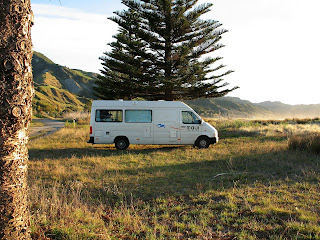A moment in history, nevertheless. I am looking forward to waking up tomorrow morning as independently British. It doesn't matter to me that the future looks anything but settled and secure. I sense big changes in the national attitude, a rebalancing of status between the various regions of the UK, and a new spirit of cooperation as we rise to challenges we have not had to face for almost fifty years.
It can only do us good; we have got used to having an uncomplicated life, with EU handouts to feather the bed, and EU law to use as a loophole. It was maddening to see some persons misuse wise and humane EU machinery for bad ends. They won't be able to now. And I don't believe that the present government, nor any future government, will take back legal advances in human rights and the protection of minorities. These things are vote-winners anyway. Why fear their loss? There is now a chance to demonstrate to the world that Britain can be excellent in all things. We will need to be, to attract investment and to encourage other nations who may be tempted to backslide.
We can't be a superpower in the economic or military sense; but we can still show leadership in so many ways - climate change included. Indeed, I rather think that 'climate change' will be the chief driver of events in the next fifty years, spurring invention, altering traditional priorities, and enforcing unprecedented global co-operation. In the face of all that is likely to be in store, grand alliances will have to be forged, otherwise we will all just perish in a heat death, after sundry Land Wars and Water Wars. I don't think that will necessarily happen, but I do think 2020 is the tipping-point year for many things, and to my mind it's a prudent thing to be free and able to pursue an independent course.
So in fact Brexit is more important than it might seem. The 2016 vote, now finally made real, will have very profound consequences, and future historians will trace much back to it.
To conclude this post, let me dip into a 1969 Opinion column in the Daily Express, the daily paper my parents read. I wasn't an Express fan. It was always self-consciously on some crusade or other, which the youthful me thought tiresome. It didn't at all reflect my seventeen-year-old point of view - much as the Daily Mail nowadays most certainly does not. But it was the only paper in the house.
I'd kept the centre four pages of the Express from Tuesday October 14th 1969, mainly because of this ad from the Decimal Currency Board:
I doubt if I noticed what the Opinion column had to say at the time, but in view of Brexit it makes interesting reading, giving an insight into right-of centre attitudes a few years before we joined the EU - or the 'Common Market' as it was then:
It says:
OUR STRONG HAND
Sir Alexander Downer, the Australian High Commissioner, delivers a timely warning on Britain's future. His words should bring a sense of shame to our political leaders of all parties, to commercial and industrial leaders. And to those in the Foreign Office responsible for Britain's long-term strategy.
Sir Alexander says: 'Where I begin to differ from some of my friends and from some London publicists is in their insistence that primarily in Europe lies Britain's future basic prosperity.' Rightly the High Commissioner sees this as 'part of the disease of Little England.' The lesson Sir Alexander rams home is that Canada, Australia and New Zealand, in the world of tomorrow, will be richer and more influential than most of our neighbours across the Channel. The recent Tory and Labour Party Conferences at Brighton showed that the leaders of our main political parties seek to blur the issues involved in Britain's entry into Europe. There were warnings against looking back to the glories of the Imperial past. But to look across the oceans to the countries settled by Britons is to look to the glittering future. Sir Alexander tells the people of Britain: 'You hold better cards in your hand than any nation on Earth.'
His stirring idea is that there should be a revival of interest in the Commonwealth and 'a renewed resolution to make it work and realise its enormous possibilities.' That should be Britain's firm resolve.
Gung-ho! Put out more flags!
Ah, the world has changed. So has the Commonwealth. And our fifty-year adventure in Europe hurt our friends across the ocean - they won't be so glad to have us back, although no doubt some kind of 'special relationship' will eventually be re-established with them. In so far as 'special relationships' are ever all that special.
Was Sir Alexander right about Canada, Australia and New Zealand becoming 'richer and more influential' places than 'most of our neighbours across the Channel'? I'm not sure.
Will we now become 'richer and more influential' because of Brexit? Again, I'm not sure. And even if we do, who exactly in this country will have those riches, and that influence? I don't want it to be the Old Guard.





















































